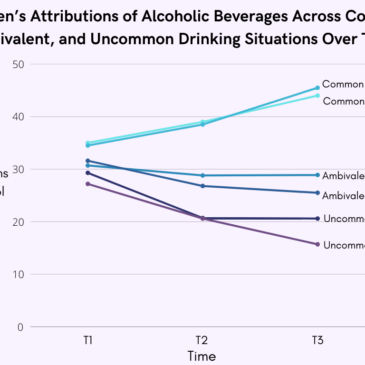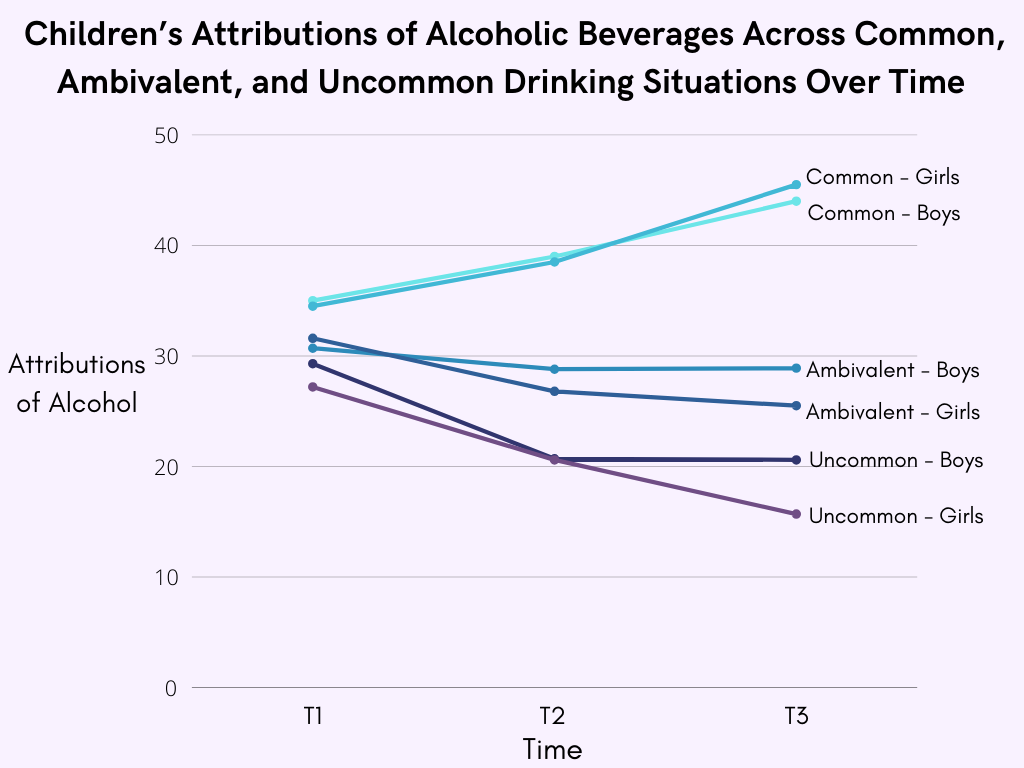One way children learn about alcohol is by watching how adults drink in different situations. They learn, for example, that it’s appropriate to drink at a party but not while driving. The term “situational drinking norms” refers to culturally accepted levels of drinking for different people, in different situations. It is possible that men and women have different drinking habits partly because boys and girls develop a different understanding of situational drinking norms. This week, The DRAM reviews a study by Megan Cook and colleagues that explored possible sex differences in young children’s developing understanding of situational drinking norms.
What was the research question?
How do children’s perceptions of situational drinking norms change from age 4 to 6, and do boys and girls differ in how their perceptions change over time?
What did the researchers do?
A total of 298 children from the Netherlands (ages between 4 and 6 at baseline) completed the Dutch electronic Appropriate Beverage Task annually for three years. The children saw drawings of adults in situations where drinking would be common (e.g., a party), uncommon (e.g., the office), or ambivalent (e.g., camping), and they were asked what the adults were drinking. The researchers used three-level regression models to learn how children’s attributions of alcohol changed over time.
What did they find?
As children got older, they were more likely to attribute alcohol consumption in common drinking situations, and less likely to attribute alcohol in uncommon or ambiguous drinking situations (see Figure). When they were 4-6 years old, boys guessed that the people in the pictures were drinking alcohol in 35% of common drinking situations and girls did so 34% of the time; when they were 6-8 years old, these rates rose to 44% and 45%. Boys and girls did not differ from each other in any year or in their patterns over time.
Figure. Children’s associations of alcoholic beverages across common, ambivalent, and uncommon situations as they got older (from T1 to T3). Click image to enlarge.
Why do these findings matter?
Prior research suggests that the foundational understanding of future drinking patterns is established at a young age. It is important to understand how alcohol-related perceptions develop over time and use these findings to develop early prevention or intervention measures. The lack of differences between boys and girls was surprising given other studies suggesting sex differences in the development of alcohol-related cognitions beyond situational drinking conventions. The researchers suggest a need to look at gender identity, rather than a biological determination of sex or gender, and its relation to drinking-related cognitions.
Every study has limitations. What are the limitations of this study?
This study may not be generalizable to other countries because of varying cultural definitions of common, ambivalent, and uncommon drinking situations. The study had low recruitment rates, which is common in school-based studies.
For more information:
Parents, guardians, and other adults who want to have conversations with youth about alcohol, tobacco, and substance use can find information at TalkSooner. They provide drug facts, age-specific talking tips, and a glossary of drug-related terms.
The National Institute on Alcohol Abuse and Alcoholism also has tips and resources for people struggling with problem drinking. For additional drinking self-help tools, please visit our Addiction Resources page.
— Taylor Lee
What do you think? Please use the comment link below to provide feedback on this article.





